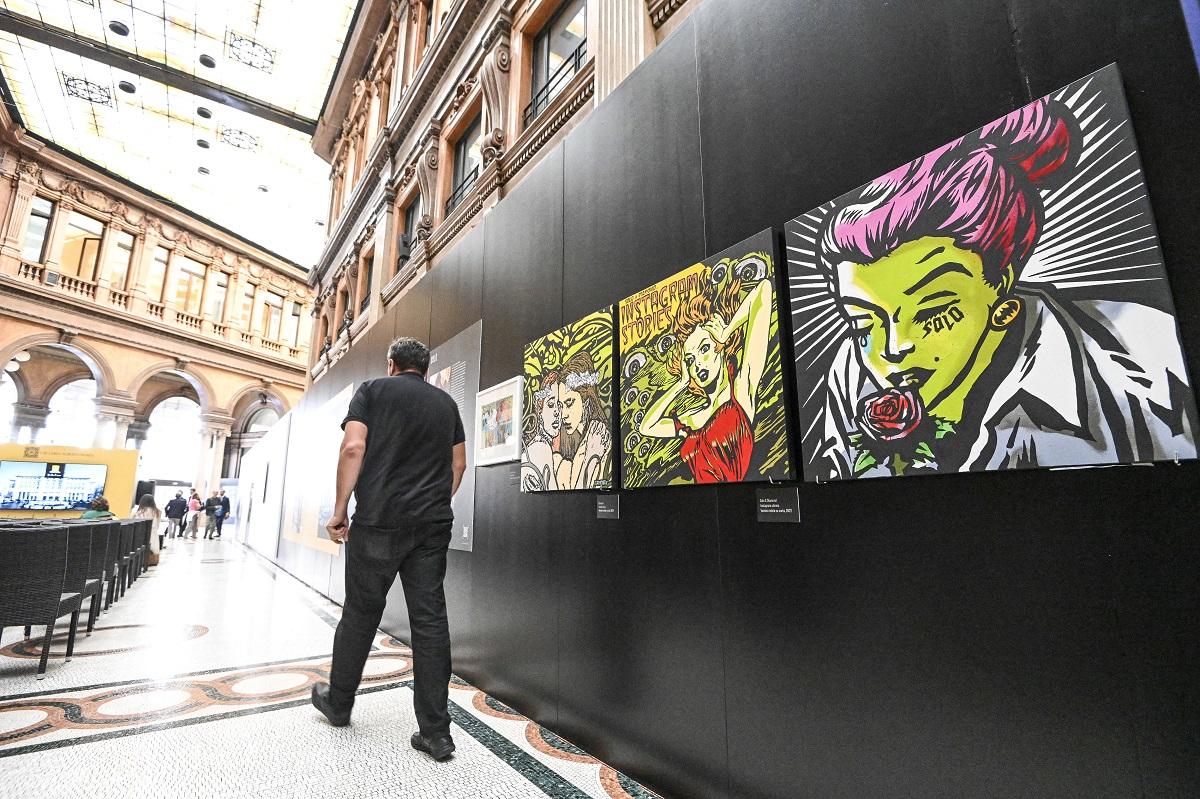Street art in Rome: neighborhoods, works and artists not to be missed
It is often heard that “Rome is an open-air museum.” A statement that is even more true since the legacy of the classical world, Renaissance masterpieces and 20th century avant-garde movements has been joined by a new source of beauty: street art. The latter, from September 29 to November 29, was the protagonist of a temporary exhibition set up inside the Alberto Sordi Gallery. And while the exhibition is no longer available to visitors, the heritage of street art in Rome can still be admired in the streets of the city.
Indeed, in recent decades, there have been so many national and international artists who have decorated the Capital to tell stories, raise criticism, and enhance peripheral areas. To get to know them better, let’s take a guided tour through the colorful Roman neighborhoods of this en plen air museum.
Rebibbia doesn’t need anything and it happens to see great works
Let’s start with Rebibbia, which has had its own epigone in Italian pop culture for a few years now: Zerocalcare, a cartoonist who since the very first strips published on his blog has told of his love for his home neighborhood. A sentiment consecrated with a work of more than 30 square meters, created on commission by Atac next to one of the entrances of the Rebibbia metro station. A huge mammoth framed with iconic phrases, such as, “Everything is missing here, we don’t need anything.”
But Rebibbia is not only Zerocalcare. In fact, the neighborhood is also home to Càpita, a work by Italian artist Blu, one of the world’s most appreciated street artists. His figure is biting and critical, while his style is cartoonish and caricatured. Characteristics fully represented by the masterpiece on Ciciliano Street: an imposing and intricate water park that stages economic inequality and social injustice.
Ostiense, where art meets ecology and metaphysics
Other pungent and enchanting works by Blu can be found in Ostiense, a neighborhood where street art also has a regenerative impact thanks to the giant Hunting Pollution, the largest mural in Europe. Created by Iena Cruz, the 1,000-square-meter work depicts a heron intent on fishing in a polluted sea under a rain of oil. To paint it, an eco-paint was used that, activated by light, releases oxidizing molecules capable of transforming harmful particles into inert salts. A purifying action equal to that of a forest of 30 trees.
On the neighborhood’s main street, however, is a work by Sam3, a very important Spanish street artist. The protagonist is a faceless, star-covered figure holding a planet where chaos reigns, represented by humans chasing a seemingly elusive animal. Minimal, poetic and dreamlike, as in the author’s style.
From the surrealism of Quadraro to the neorealism of Pigneto
Quadraro is also a neighborhood rich in noteworthy works. In the area, the likes of Alice Pasquini, Diavù, Lucamaleonte, Fin DAC, and especially Ron English, a contemporary art superstar, have made their mark for the M.U.Ro (Urban Museum of Rome). The American made the Temper Tot and Mousemask Murphy puppets, namely a child Hulk and a Mickey Mouse wearing a gas mask. Extremely surreal figures, symbols of the strength and uncontaminated nature of the Quadraro.
Pigneto is another of the homes of street art in Rome. There the absolute star is Pier Paolo Pasolini, who filmed some scenes of his Accattone in the neighborhood. Beautiful works have been dedicated to the great Italian intellectual by Omino 71, Mirko Montano and MAUPAL. The latter created L’occhio è l’unico che può accorgersi della bellezza (The eye is the only one who can notice beauty), drawing the gaze of PPP surveying the neighborhood from above.
Neighborhood you go, masterpieces you find
Honorable mentions for Diamond and Solo’s My darling Clementine in Garbatella, for 999Contemporary’s Big City Life project that redeveloped Tor Marancia thanks to artists such as Mr. Klevra. Klevra, for Lucamaleonte’s Indigenous Heritage in San Lorenzo, for Jorit’s portrait of Bobby Sands in Tufello, for the glass bells transformed into works of art in Centocelle, Tor Pignattara, Cornelia and Baldo degli Ubaldi by the GAU (Gallerie di Arte Urbana) project, for the portraits of Pittori Anonimi in the Trullo, for the works of Hitnes, Liquen and Agostino Iacurci for the SanBa project in San Basilio.
To exhaustively and definitively map Rome’s street art heritage is a difficult task: the scenario is constantly changing, works can disappear at any moment, and new ones pop up with equal celerity. One thing is certain: thanks in part to the sprays, brushes and stencils of the artists who have left their signatures in the Eternal City, walking around Rome is the equivalent of “taking the risk” of being constantly amazed.
2 May


latest news
Archive
